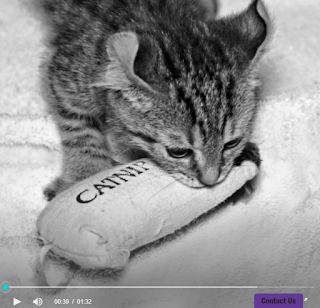What Makes Your Pet Happy
Are there tell-tail signs that indicate to you your pet
is happy? Why, yes, there are!
A Happy Dog…- has a “sparkle” or “glow” about him. He’s interested in his surroundings and enjoys interaction with people and other animals.
- makes eye contact and is interested in his humans’ activities. He often joins in on the fun.
- is interested in eating his food.
- has a shiny coat, bright eyes, pink gums and a pink tongue (except for Shar Peis, Chow Chows, or other black tongued breeds, of course!)
- wags his tail when in verbal or physical contact with humans.
- makes pleasure noises when interacting with humans and other animals (noises that his humans know as happy noises).
- sleeps well at night with little or no disturbance.
- rolls around in obvious pleasure.
- appears to spontaneously seek pleasure, like running and/or swimming in the surf when at the beach.
- is relaxed around other dogs and has good inter-canine relationships.

A Happy Cat…
- is confident, interacts with her humans, and often initiates contact.
- “talks” to her humans (the classic sound of feline happiness is the “purrrrrr,” of course).
- has bright eyes, a good coat, pink gums and tongue, and grooms herself several times per day.
- rolls on her back, jumps and plays.
- wanders around her house and/or outdoors seeking entertainment, such as swatting at bugs, chasing butterflies, calling birds, using her scratching post, and playing hide and seek.

You’ll likely notice the list for a happy cat is noticeably shorter than the list for a happy dog, but, as most cat lovers know, cats aren’t quite as outgoing as dogs and are prone to standoffish personalities.
So how does your pet rank on the happiness meter? Is Tigger a typical happy
cat, or do you feel there may be cause to worry? Whether you are the pet parent
of a dog or a cat, if you notice any concerning changes in your pet’s behavior,
speak to your vet. After all, while our pets can display obvious signs of
happiness like the ones above, they can’t verbally tell us when something is
wrong, and are quite skilled at masking pain and discomfort.
For more - http://www.2pawsupinc.com



Comments
Post a Comment